Yes, folks, it’s that time of year again, when nestlings become fledglings and they finally leave the nest for good. You may have noticed an increase of different-looking birds in your yard and that is because you are observing new birds about to make their way out in the world. Fledglings can be a bit awkward as they learn to be out there on their own, but rest assured parents are keeping a watchful eye on their young. You may have been lucky enough to watch fledglings hopping around on the ground as they are still unable to take flight yet. This is all normal and a natural part of their development. During this time, parents will continue to feed their young and help them to learn the proper skills for independence. They are very vulnerable at this stage due to predation and parents will expend a great deal of time and energy to make sure their young survive.
Birds are considered to have fledged when their feathers and wing muscles are sufficiently developed for flight. It usually takes about two weeks for fledglings to leave the nest, or “fledge.” They will usually stay with their parents for two to three weeks after that. Males will continue to feed the fledglings as the females will begin to incubate a new brood of eggs.
For altricial birds, meaning those that spend more time in a vulnerable condition in the nest, the nestling, and fledging stage can be considered the same. For precocial birds, meaning those that develop and leave the nest quickly, usually ground nesters, a short nestling stage precedes a longer fledging stage.
This time of year is a wonderful time for observing birds and their behavior. Even better, is the opportunity to photograph young birds during their development. During the spring, I have discovered that we have had several nests in different areas on the property as well as in the front of the house and inside of the garage. Now that the summer is progressing, I have had the pleasure of observing fledglings as well as their interactions with their parents in the past couple of weeks. I of course have accomplished all of this from safe distances, as to not cause stress or harm to the parents or their young.

A chipping sparrow (Spizella passerina) feeding its young.
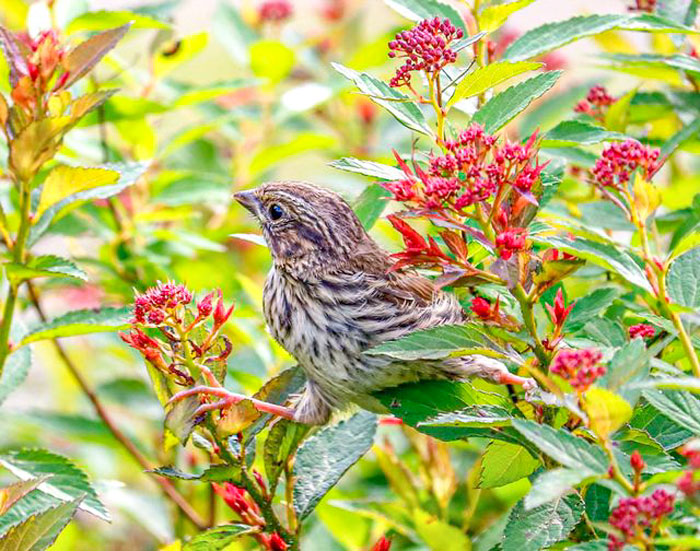
A song sparrow (Melospiza melodia) fledgling making an awkward landing in a spiraea bush (Rosaceae) in the garden.
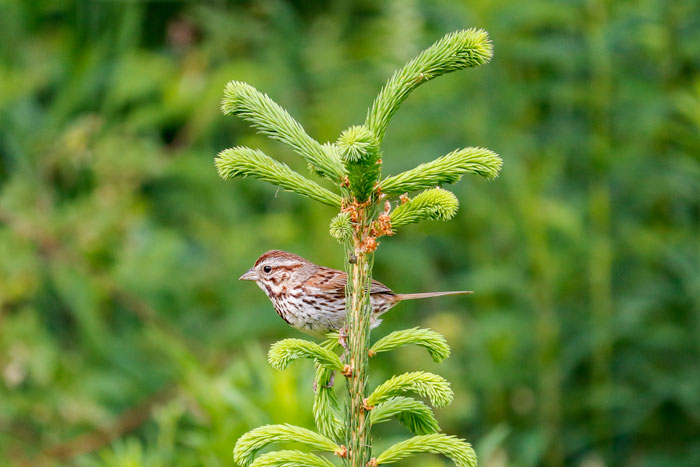
A song sparrow keeping an eye on its young.
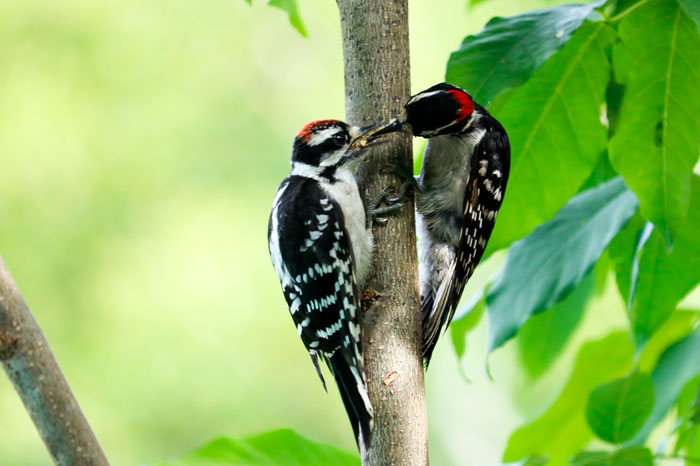
A downy woodpecker (Picoides pubescens) father feeding suet to his son.
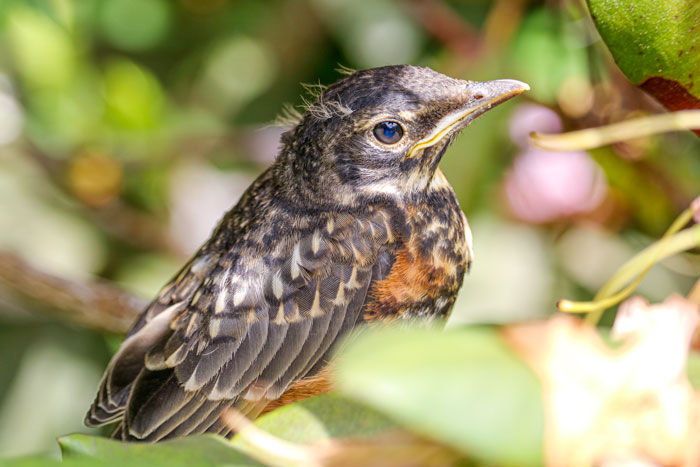
An American robin fledgling (Turdus migratorius) just leaving the nest.
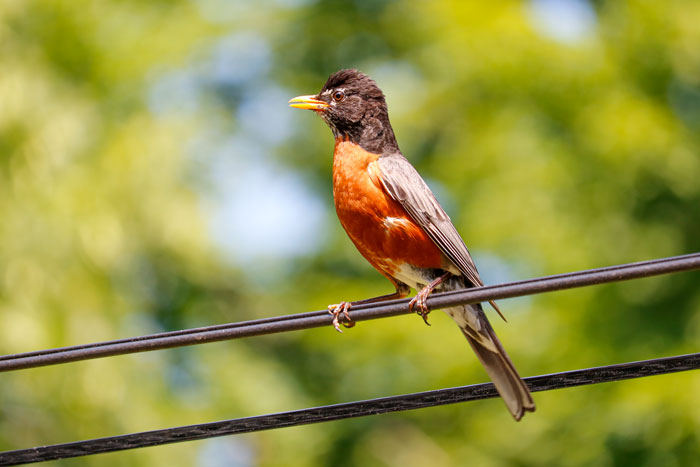
An American robin parent watching over its fledgling.
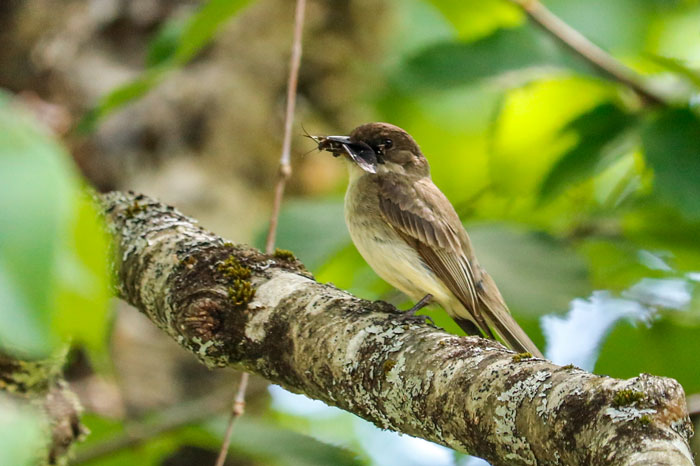
An eastern phoebe (Sayornis phoebe) bringing insects to its young.
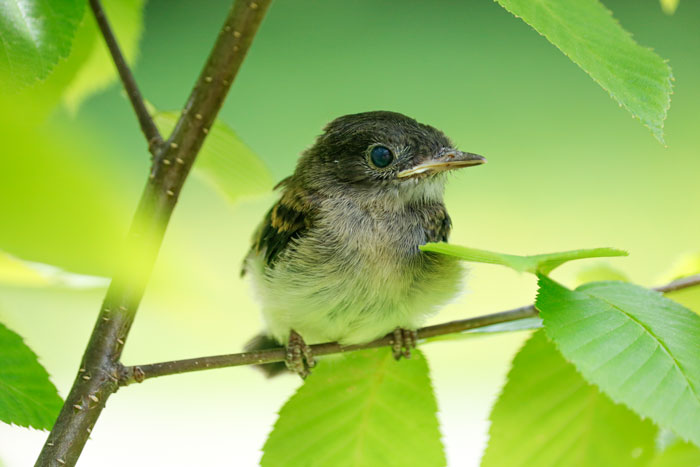
An eastern phoebe fledgling perching in an ash tree (Fraxinus) in the yard.
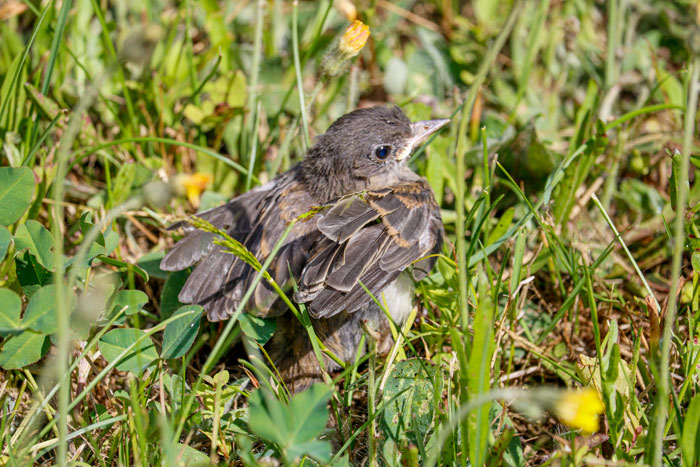
An eastern phoebe fledgling learning to fly.
I’m not sure where these barn swallow (Hirundo rustica) fledglings came from, but I have a sneaking suspicion that they have been nesting at the horse rescue located down the street. They have shown up two days in a row now and the adults have been catching several insects for their fledglings. It is incredible to know that they can catch something like sixty insects in an hour. As far as I’m concerned, they can help themselves to as many as they would like. Now, if they could get working on catching every one of those deer flies in the yard. Man, are they annoying!
Below are photographs from these visiting barn swallows. The fledglings sat on the wire, some with their mouths open as they waited for the adults to bring back food. Barn swallow parents differ from the above bird species in that sometimes they get help from other birds to feed their young. These birds can be older siblings from previous clutches, but unrelated juveniles may help to feed fledglings well.
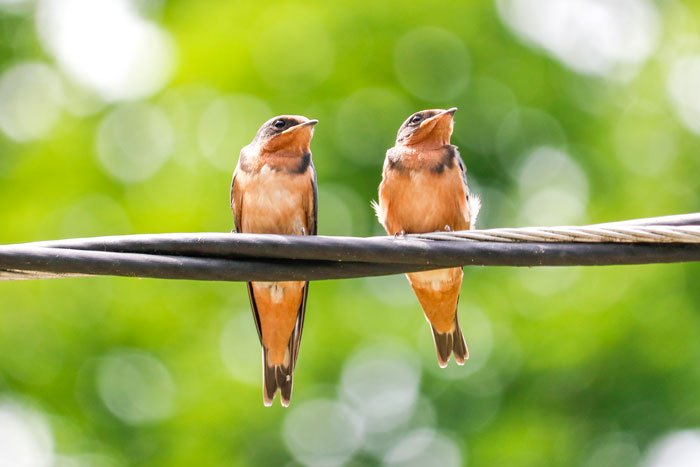
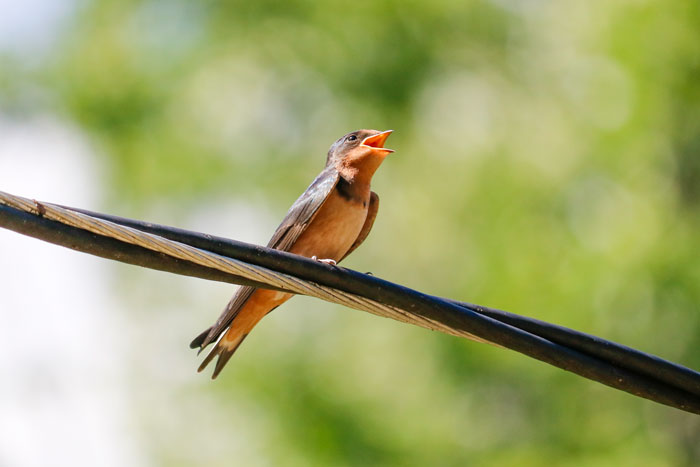

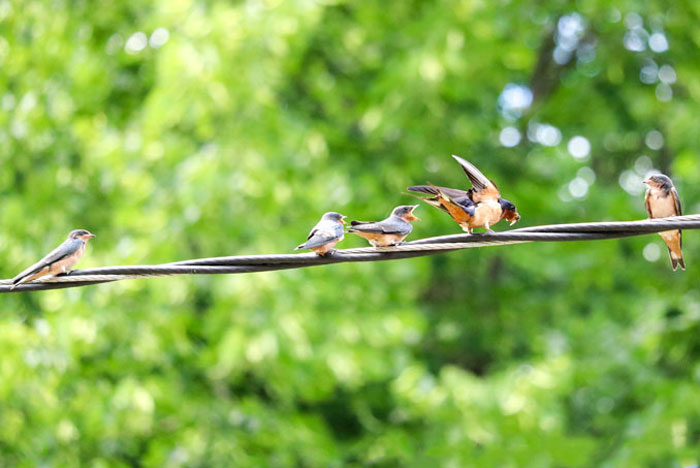
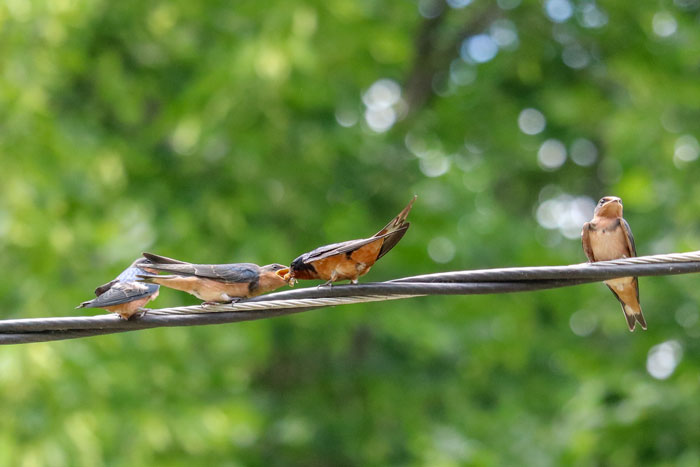
Not all bird species will have multiple broods per season, but many in fact do. If you missed your chance to observe the first round of fledglings, don’t worry, perhaps, you will get your chance during the summer. I don’t know about you, but I’m sure looking forward to seeing even more species of fledglings this season.
I liked this post. Very interesting and nice photos. I live in NC and do not see the fledglings often. Probably because I work and do get home until later in the day. but I noticed the black snakes lying in wait near my feeders and nesting boxes. I kill them – frowned upon by some – but I like my birds and feel like providing food and boxes I should keep the snakes away.
I have watched some parents teach their fledglings to fly, Carolina Wrens.
Thank you for your kind words and I’m glad you liked reading my post, John. I hope you get a chance to see more fledglings in the future – I suppose the season is still young. Enjoy!